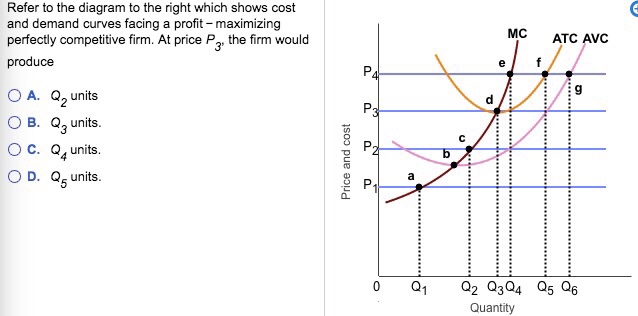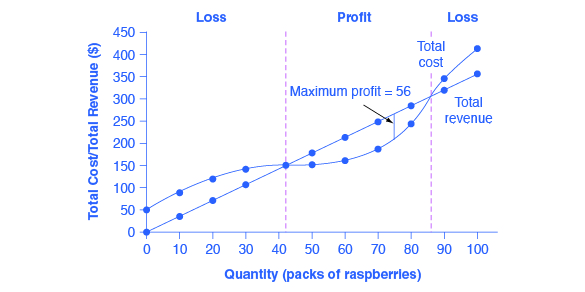Profit Maximizing Level Of Output For A Perfectly Competitive Firm

Does Profit Maximization Occur at a Range of Output or a Specific Level of Output.
Profit maximizing level of output for a perfectly competitive firm. If the market price of soybeans falls to 8 then to maximize profits this farmer should produce A 200 bushels of soybeans. C 1000 bushels of soybeans. A perfectly competitive firm will also find its profit-maximizing level of output where MR MC.
Since the market price is constant for each unit sold the AR curve also becomes the marginal revenue curve MR for a firm in perfect competition For the firm the profit maximising output is at Q1 where MCMR. Remember that the area of a rectangle is equal to its base multiplied by its height. Neoclassical economics currently the mainstream approach to microeconomics usually models the firm as maximizing profit.
Likewise if there is negative economic profit then firms will exit the market to take advantage of opportunities elsewhere until economic profit again equals zero. This profit maximisation happens at the point where the maginal revenue is equal to marginal cost. For a firm in perfect competition demand is perfectly elastic therefore MRARD.
Learn more about how to use a graph to identify the profit-maximizing quantity for a firm in a perfectly competitive market and identify the area that represents the firms profit or loss. Refer to Exhibit 23-7. Remember that the area of a rectangle is equal to its base multiplied by its height.
This occurs at Q 80 in the figure. The key difference with a perfectly competitive firm is that in the case of perfect competition marginal revenue is equal to price MR P while for a monopolist marginal revenue is not equal to the price because changes in quantity of output affect the price. This means that we have a positive marginal profit.
Refer to Exhibit 23-7. As shown in the graph above the profit maximization point is where MC intersects with MR or P. This occurs at Q 80 in the figure.









